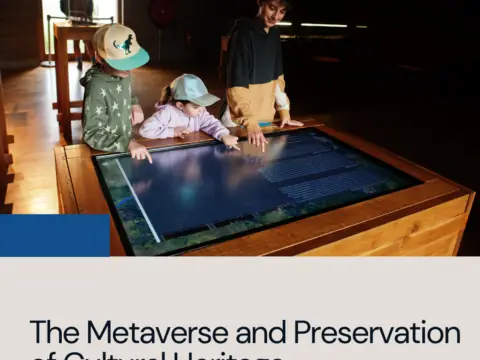In the dynamic landscape of the Metaverse, a new chapter is unfolding—one that transcends traditional boundaries to weave together the threads of culture, history, and technology. This exploration delves into the role of the Metaverse in cultural preservation, shedding light on how digital realms are becoming custodians of heritage and artifacts.
Digital Archiving of Cultural Heritage
In the Metaverse, the digital archiving of cultural heritage takes center stage. Museums, historical sites, and cultural institutions are leveraging virtual environments to meticulously capture and preserve artifacts, monuments, and artworks. Through advanced scanning technologies, these digital replicas ensure that the essence of cultural heritage is not only conserved but also made accessible to a global audience.
Immersive Exhibits and Virtual Museums
Metaverse platforms enable the creation of immersive exhibits and virtual museums that transcend the limitations of physical space. Visitors can explore ancient civilizations, view historical artifacts up close, and engage with cultural narratives in a way that goes beyond the constraints of geography and time. This digital approach democratizes access to cultural experiences, fostering a more inclusive appreciation of our shared history.
NFTs as Digital Artifacts
Non-Fungible Tokens (NFTs) play a pivotal role in the Metaverse’s cultural preservation efforts. By tokenizing digital replicas of artifacts or creating unique digital artworks, NFTs establish a bridge between the physical and digital realms. These digital artifacts, often backed by blockchain technology, authenticate the provenance of cultural items, providing a secure and transparent way to trace their origins and ownership.
Cultural Engagement in Virtual Worlds
Communities within the Metaverse actively engage in cultural exchange, creating spaces that celebrate diversity and heritage. Virtual festivals, art exhibitions, and historical reenactments become avenues for individuals worldwide to connect with and appreciate different cultures. The Metaverse acts as a global agora where cultural dialogues unfold, fostering mutual understanding and respect.
Augmented Reality (AR) for Urban Exploration
In addition to the virtual realm, augmented reality enhances cultural preservation in physical spaces. AR applications guide users through cities, overlaying historical information, and visualizing past landscapes. This fusion of the digital and physical realms transforms urban spaces into living museums, allowing people to experience the rich tapestry of cultural history as they navigate through real-world environments.
Community-Driven Cultural Projects
The collaborative nature of the Metaverse empowers communities to initiate and participate in cultural preservation projects. From crowdsourced digitization efforts to community-led virtual exhibitions, these projects harness the collective wisdom and passion of individuals dedicated to safeguarding cultural heritage. The Metaverse becomes a canvas for communities to express, celebrate, and perpetuate their unique cultural identities.
Challenges and Considerations
While the Metaverse offers unprecedented opportunities for cultural preservation, challenges such as digital obsolescence, data security, and ethical considerations must be addressed. Striking a balance between technological innovation and cultural sensitivity is crucial to ensuring the responsible stewardship of our shared heritage in the digital age.
Conclusion
As the Metaverse continues to evolve, its role in cultural preservation becomes increasingly profound. By digitizing heritage, fostering cultural engagement, and leveraging technologies like NFTs and AR, the Metaverse opens new frontiers for safeguarding our collective legacy. This transformative journey not only preserves the past but also redefines how we perceive, interact with, and pass on our cultural narratives to future generations.




